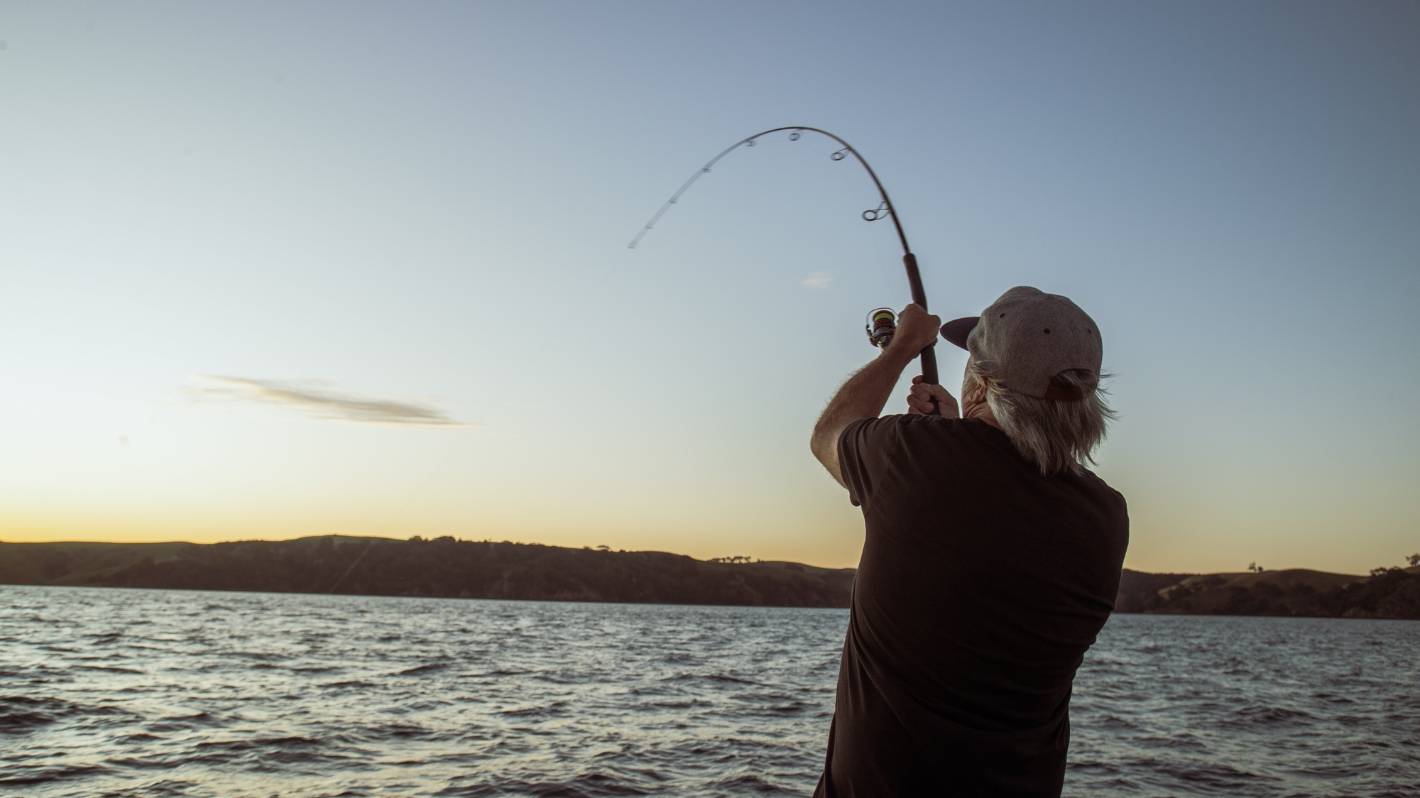David White/Stuff
Labour Weekend is often when people pull out their fishing rods and hit the water in search of a feed. (File photo)
Labour Weekend is the unofficial start to summer and many people will be pulling out their fishing rods in order to catch a feed.
But fishers need to be on the lookout for fish with milky, white, mushy flesh, afflicting about 20% of snapper in Auckland’s Hauraki Gulf and Northland’s east coast.
Now known as milky white flesh syndrome, the problem has been noted on and off in previous years but has become more apparent in the last 18 months in both snapper and trevally.
New Zealand Fisheries science and information director Simon Lawrence said testing by Biosecurity NZ found no evidence of exotic disease or parasites and no evidence of a food safety risk.
However, the fish were found to have nutritional deficiencies, he said.
Scientists reported the conditions suggested a long period of starvation, with symptoms including poor body condition, liver atrophy and tissue breakdown.
Rikki Taylor | NIWA
Milky white flesh syndrome results in snapper having mushy and milky, white flesh when raw.
“There has been some public speculation that this means food sources for snapper have not been available,” Lawrence said.
“This is a complex matter … and affected fish samples have been found with food in their stomachs.”
Fisheries NZ has commissioned Niwa to research the prevalence of milky white flesh syndrome and look into potential correlation with environmental factors.
The results from this research are expected in mid-2024, Lawrence said.
Rikki Taylor | NIWA
Fish with milky white flesh syndrome were found to be very skinny and have nutritional deficiencies including liver atrophy and tissue breakdown.
Biosecurity NZ is also continuing to monitor the issue, with testing focusing on diseases and parasites in the affected fish.
But the increase in milky white flesh is cause for alarm and more urgent action, according to healthy marine environment advocate, LegaSea.
“We believe it’s getting worse but as we talk about it, more people are coming forward,” general manager Sam Woolford said.
LegaSea is now getting reports of the syndrome from Northland’s Rangiputa and northwest coast, as well as through the Bay of Plenty.
The organisation has started a survey to check the prevalence and is helping fund a PhD position at Auckland University to find out more.
Supplied
LegaSea GM Sam Woolford says the fact snapper are starving – when they are a hardy species – is cause for alarm and urgent action. (File photo)
Woolford said the starving snapper are a major indicator of an unhealthy coastal environment.
“It shows that we’re doing something incredibly bad to the environment.
“Snapper are an incredibly hardy species which eat a range of food and live across a range of environments, and they’re showing signs of chronic malnutrition – that’s really concerning.”
Woolford said the fact the snapper were found to have food in their stomachs did not take away from the fact they had atrophy from malnutrition.
He agreed it is a complex matter but said destructive fishing methods like purse seining – which scoops up schools of bait fish and bottom trawling should stop as a precautionary measure until more is understood.
Lawrence Smith/Stuff
North Auckland iwi Ngāti Manuhiri is taking over the role of the Ministry for Primary Industries in policing fisheries in the Hauraki Gulf. Video first published October 22 2022.
“If we’re not sure, take the pressure off and give the environment time to recover. We can do that at the same time as studying.”
Sedimentation, made worse by extreme weather this year, is also likely to have an impact by smothering the shellfish snapper like to eat, Woolford said.
An outbreak of the invasive superspreader seaweeds Caulerpa brachypus and Caulerpa parvifolia – now found in parts of the Hauraki Gulf, around Aotea Great Barrier and Northland’s Bay of Islands – could be another contributing factor, he said.
Milky white flesh syndrome was spotted before Caulerpa and is seen in areas wider than the invasion, but the seaweed does smother scallop beds, another favourite food of snapper.
However, Woolford believed the syndrome was caused by decades of degradation to the marine environment, rather than any overnight changes.
“Crawfish and scallops used to be in abundance and now they’re getting harder and harder to find,” he said.
“If we don’t take a precautionary approach, the impact will become quite clear over time but hindsight will be quite uncomfortable for us.”
For those who are hitting the water, Biosecurity NZ is interested in milky white flesh in snapper from outside Auckland and Northland’s east coast, and any other finfish.
Those with suspected cases can call 0800 80 99 66 and will be asked to keep the whole fish chilled and send it for sampling within 24 hours.
LegaSea also encourages all fishers to fill in its survey, whether or not fish with milky white flesh were caught.



